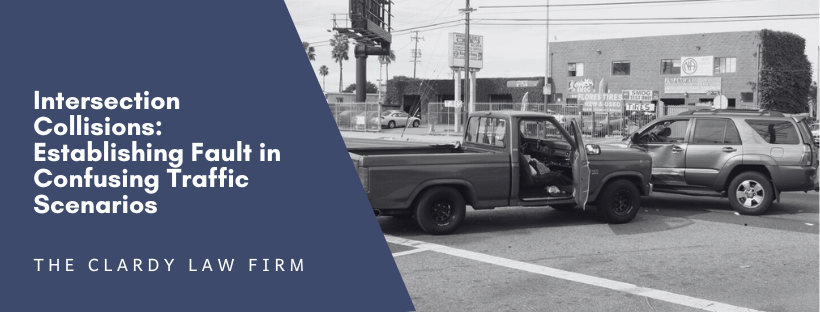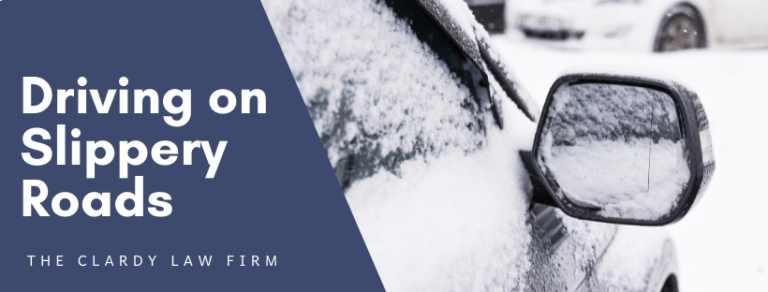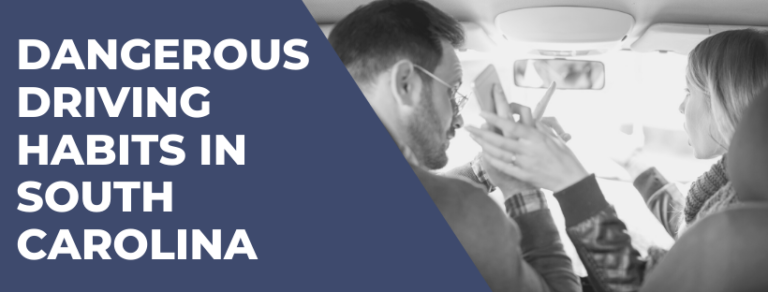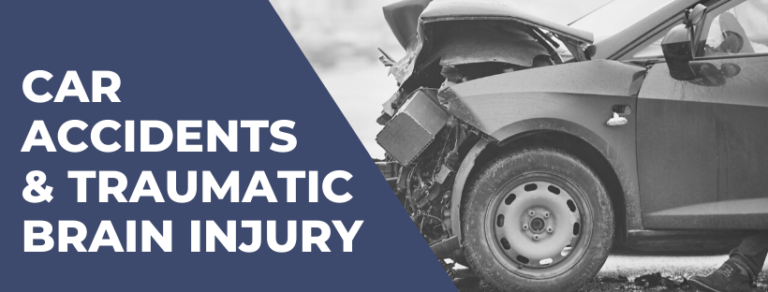Regarding road safety, few scenarios are as fraught with potential danger and complexity as intersections. These bustling crossroads, where vehicles from different directions converge, often become the stage for collisions and near-misses. Understanding fault in intersection collisions isn’t merely a matter of assigning blame; it’s about deciphering the intricate web of events leading to an accident, ensuring justice for those involved, and, most importantly, preventing future tragedies.
Intersections represent a microcosm of the road network’s complexities. Here, drivers must navigate a myriad of factors simultaneously: traffic signals, signs, pedestrian crossings, and the unpredictable behavior of fellow drivers. Moreover, each intersection possesses its own unique challenges, from simple four-way stops to sprawling multi-lane junctions with intricate signal systems. Even the most seasoned drivers can find themselves in unfamiliar and confusing situations in such an environment.
Factors Contributing to Intersection Collisions
Intersections serve as dynamic hubs where the paths of multiple vehicles intersect, often leading to complex and potentially hazardous situations. Understanding the myriad of factors contributing to intersection collisions is crucial for grasping the nuanced dynamics at play. Below are several key factors that frequently play a role:
Lack of Clear Right-of-Way
- Confusion regarding who has the right-of-way is a common factor in intersection collisions.
- Failure to yield when required or assuming right-of-way erroneously can lead to devastating accidents.
- Ambiguous or poorly marked right-of-way rules can exacerbate confusion and increase the risk of collisions.
Confusing Traffic Signals and Signs
- Inadequate or unclear signage and signals can confuse drivers, particularly at complex intersections.
- Malfunctioning traffic lights or obscured signage due to environmental factors can further compound the confusion.
- Drivers may misinterpret signals or signs, leading to errors in judgment and potentially dangerous maneuvers.
Speeding and Reckless Driving
- Excessive speed reduces a driver’s ability to react to changing conditions at intersections.
- Reckless behaviors such as tailgating, weaving between lanes, or running red lights increase the likelihood of collisions.
- Speeding through intersections limits the time available to assess the situation and make safe decisions.
Distracted Driving
- Distractions such as texting, talking on the phone, or adjusting navigation systems divert drivers’ attention away from the road.
- Cognitive distractions can impair a driver’s ability to anticipate and respond to hazards at intersections.
- Inattention to traffic signals and other vehicles can lead to critical errors in judgment and increase the risk of collisions.
Poor Visibility Conditions
- Reduced visibility due to inclement weather, darkness, or obstructed sightlines can obscure hazards at intersections.
- Limited visibility makes it challenging for drivers to accurately assess the movements of other vehicles and pedestrians.
- Failure to see traffic signals, signs, or approaching vehicles due to poor visibility increases the likelihood of intersection collisions.
By recognizing these contributing factors, drivers can better anticipate potential hazards at intersections and take proactive measures to mitigate the risk of collisions. Additionally, policymakers and transportation authorities can work to address these factors through improved infrastructure, clearer signage, and enhanced enforcement measures to promote safer intersections.
Related: How To Easily Avoid Vehicle Collisions
Legal Principles in Determining Fault
When an intersection collision occurs, determining fault is essential for assigning responsibility and facilitating the resolution of legal and insurance claims. Legal principles govern this process, providing a framework for evaluating the actions of each party involved. Understanding these principles is crucial for drivers and legal professionals involved in intersection collision cases. Below are several key legal principles commonly applied in determining fault:
Basic Right-of-Way Rules
- Right-of-way rules establish the order in which vehicles should proceed through an intersection.
- These rules dictate which vehicle has the legal obligation to yield and which has the right to proceed.
- Violations of right-of-way rules, such as failure to yield or disregarding traffic signals, may result in legal liability for the at-fault driver.
Contributory Negligence
- Contributory negligence refers to situations where multiple parties share fault for an accident.
- In some jurisdictions, contributory negligence may bar recovery for damages if the injured party is found partially at fault.
- Determining the degree of each party’s negligence is crucial in assessing liability and apportioning damages.
Comparative Negligence
- Comparative negligence principles allow for the allocation of fault based on each party’s degree of negligence.
- Under comparative negligence, damages are apportioned according to the percentage of fault assigned to each party.
- This principle enables a fairer distribution of liability, particularly in cases where multiple factors contribute to an accident.
Related: Determining Negligence in a Personal Injury Case
Analyzing Common Intersection Scenarios
Intersections present a multitude of potential scenarios where collisions can occur due to the complex interactions between vehicles, pedestrians, and traffic infrastructure. Analyzing these common intersection scenarios provides valuable insight into the dynamics of collisions and the factors contributing to fault. Below are several prevalent intersection scenarios:
T-Bone Collisions
- T-bone collisions occur when the front of one vehicle strikes the side of another vehicle, forming a “T” shape.
- Common causes include failure to yield at stop signs or traffic signals, speeding, and distracted driving.
- Determining fault often hinges on right-of-way violations and whether one driver failed to yield to oncoming traffic.
Rear-End Collisions
- Rear-end collisions occur when one vehicle collides with the rear of another vehicle stopped at an intersection.
- Factors such as following too closely, sudden stops, and distracted driving contribute to these collisions.
- Determining fault in rear-end collisions may include determining whether the lead driver contributed to the wreck.
Left-Turn Accidents
- Left-turn accidents occur when a vehicle making a left turn collides with a vehicle traveling straight through the intersection.
- Issues such as misjudging the speed of oncoming traffic, failing to yield, or running a yellow light can lead to these collisions.
- Determining fault may involve assessing whether the turning driver had sufficient time to complete the turn safely.
Right-of-Way Disputes
- Right-of-way disputes occur when drivers disagree on who has the legal right to proceed through the intersection.
- Conflicting interpretations of traffic signals, signs, or lane markings can lead to disputes over right-of-way.
- Resolving fault often requires examining the applicable traffic laws and the actions of each driver leading up to the collision.
Multi-Lane Intersections
- Multi-lane intersections pose unique challenges due to the increased volume of traffic and the potential for lane changes.
- Collisions may occur when drivers fail to signal lane changes, merge improperly, or engage in aggressive driving behaviors.
- Establishing fault may involve determining whether one driver’s actions violated traffic laws or contributed to the collision.
By analyzing these common intersection scenarios, drivers can gain a better understanding of the risks inherent in navigating intersections and the importance of adhering to traffic laws and exercising caution to prevent collisions. Additionally, recognizing the factors contributing to intersection collisions can inform efforts to improve intersection design and traffic management strategies aimed at enhancing safety for all road users.
Gathering Evidence and Witness Testimony
In the aftermath of an intersection collision, gathering evidence and securing witness testimony play pivotal roles in determining fault and facilitating the resolution of legal and insurance claims. Robust evidence collection provides crucial insights into the circumstances surrounding the collision, helping to establish a clear narrative of events. Here are key aspects to consider:
Importance of Gathering Evidence at the Scene
- Promptly gathering evidence at the scene of the collision is essential to preserve crucial information before it is lost or altered.
- Documenting the positions of vehicles, traffic signals, and road conditions can provide valuable context for reconstructing the collision.
- Taking photographs or videos of the scene, vehicle damage, and relevant signage can serve as compelling visual evidence.
Dashcam and Surveillance Footage
- Dashcam footage from involved vehicles or surveillance footage from nearby cameras can provide objective evidence of the collision.
- Reviewing footage can help corroborate eyewitness accounts, capture critical moments leading up to the collision, and reveal any traffic violations.
- Dashcam and surveillance footage can serve as invaluable tools in establishing the sequence of events and determining fault.
Eyewitness Testimony
- Eyewitnesses who observed the collision firsthand can provide valuable testimony regarding the actions of the drivers involved.
- Witness statements can corroborate or challenge the accounts of the drivers, shedding light on factors such as right-of-way disputes or traffic signal violations.
- Gathering contact information from eyewitnesses and obtaining their written or recorded statements can strengthen the evidentiary basis for determining fault.
Police Reports and Accident Reconstruction
- Police reports documenting the details of the collision and the responding officer’s observations are critical sources of information.
- Accident reconstruction specialists may be enlisted to analyze the evidence and recreate the sequence of events leading to the collision.
- Collaborating with law enforcement and accident reconstruction experts can provide additional insights into the factors contributing to the collision and aid in determining fault.
By diligently collecting evidence and securing witness testimony, parties involved in intersection collisions can bolster their case and increase the likelihood of a favorable outcome in legal proceedings or insurance claims. Additionally, leveraging technology such as dashcams and surveillance footage, along with expert analysis, enhances the accuracy and reliability of the evidence presented, ultimately contributing to a more comprehensive understanding of the collision’s causes and consequences.
Challenges in Determining Fault
While establishing fault in intersection collisions is essential for resolving legal and insurance claims, numerous challenges can complicate this process. From conflicting accounts to insufficient evidence, navigating these obstacles requires careful scrutiny and diligent investigation. Here are several key challenges often encountered:
Conflicting Accounts
- Eyewitnesses and drivers involved in the collision may provide conflicting narratives of the events leading up to the collision.
- Variances in perception, memory, and biases can contribute to discrepancies in accounts, making it challenging to ascertain the truth.
- Resolving conflicting accounts requires meticulous examination of the available evidence and corroboration from reliable sources.
Bias of Witnesses and Drivers
- Witnesses and drivers may possess inherent biases that influence their interpretation of the collision and willingness to provide accurate testimony.
- Preexisting attitudes, relationships between parties, and personal interests can cloud judgment and skew perceptions of fault.
- Mitigating bias requires careful vetting of witnesses, corroborating testimony with physical evidence, and employing objective analysis techniques.
Insufficient Evidence
- In some cases, a lack of tangible evidence, such as dashcam footage or eyewitness testimony, can impede efforts to determine fault conclusively.
- Limited physical evidence at the scene, such as skid marks or vehicle damage, may provide insufficient insight into the collision’s dynamics.
- Overcoming insufficient evidence necessitates leveraging alternative sources of information, such as accident reconstruction techniques and expert analysis.
Complexity of Traffic Laws
- Intersection collisions often involve intricate legal nuances regarding right-of-way rules, traffic signals, and other traffic laws.
- Misinterpretation or misapplication of traffic laws by drivers or legal professionals can obscure fault and hinder resolution.
- Clarifying the applicability of relevant traffic laws and consulting with legal knowledge can help navigate the complexities of intersection collision cases.
Navigating these challenges requires a comprehensive understanding of the intricacies of intersection collisions, diligent evidence collection, and rigorous analysis. By addressing these challenges head-on and employing sound investigative techniques, stakeholders can overcome obstacles and better understand fault in intersection collisions. Additionally, promoting transparency, objectivity, and accountability in the investigative process is essential for fostering trust and ensuring equitable outcomes for all parties involved.
Seeking Legal Assistance
In the aftermath of an intersection collision, navigating the complexities of determining fault and pursuing legal recourse can be daunting tasks. Seeking legal assistance from attorneys experienced in personal injury and traffic law is crucial for protecting one’s rights and interests. Here’s why consulting with a legal professional is essential:
The Importance of Consulting with an Attorney
- Legal professionals possess in-depth knowledge of relevant laws, regulations, and precedents governing intersection collisions.
- Attorneys can provide invaluable guidance on the steps to take following a collision, ensuring compliance with legal procedures and deadlines.
- Consulting with an attorney early in the process can help individuals understand their rights, options for seeking compensation, and potential legal strategies.
Role of Attorneys in Investigating Intersection Collisions
- Attorneys conduct thorough investigations into the circumstances surrounding the collision, gathering evidence and interviewing witnesses.
- They collaborate with accident reconstruction experts, review police reports, and analyze medical records to build a compelling case.
- Attorneys leverage their negotiation skills to engage with insurance companies, advocating for fair compensation on behalf of their clients.
How Attorneys Navigate Legal Complexities
- Legal professionals navigate the complexities of determining fault by applying legal principles such as negligence, comparative fault, and contributory negligence.
- They possess the knowledge to interpret traffic laws, assess liability, and anticipate potential challenges in proving fault.
- Attorneys advocate for their clients’ interests in legal proceedings, whether through negotiation, mediation, or litigation, to secure favorable outcomes.
Seeking legal assistance from qualified car accident attorneys is essential for effectively navigating the aftermath of an intersection collision. By partnering with experienced legal professionals, individuals can access the resources, knowledge, and advocacy needed to protect their rights, pursue just compensation, and achieve resolution following a traumatic event on the road.
As we strive to create safer roadways and communities, let us remain vigilant, proactive, and dedicated to fostering a culture of responsible driving at intersections. By working together and embracing a shared commitment to road safety, we can reduce the incidence of intersection collisions, save lives, and create a brighter, safer future for all.
If you or a loved one have been injured in an intersection accident, contact The Clardy Law Firm for a free consultation. Our Greenville, South Carolina attorneys have spent more than 25 years fighting for the rights of individuals and families throughout the state. We strive to recover the maximum compensation you are owed for your injuries, pain and suffering, and other damages.





